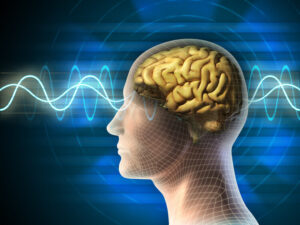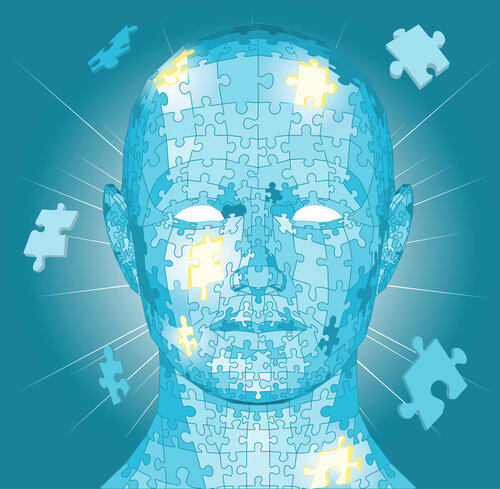The Process of Integration
“Integration,” is a word that is commonly defined as “the process or action of integrating,” or as “the process of combining into a whole, into a single unit.” Etymologically, it comes from the Latin word, “integer,” or “integrare,” which means, “made whole.” The word, “integration,” is used in a variety of contexts, and regardless of what the context may be, its essence remains-Integrating. Combining. Made whole.
Our CBT Certificate Course is a 16-week course held twice a year. As an evidence-based practice, CBT is much broader than many practitioners have come to appreciate and there has been a number of principles, tools, and concepts that have been shown to make a significant difference, yet have remained unavailable, except to a few. As we often say, this is far from malicious. For every 18 months, the amount of knowledge in our field doubles. It is unclear how much anyone hearing that may appreciate what that really means, but a body of knowledge that doubles every one year and a half means catching up may be a vain effort. The SWEET Institute knows this, and that is why we continuously monitor and ensure that what is most likely to be the most useful to our clinicians, patients, and clients, makes it to clinical practice, without having to wait for the usual 25-year gap. This explains why in this Fall’s CBT Certificate Course, we are making sure that all participants master the application of a body of knowledge that leads to transformation the moment it is fully understood and properly implemented. Part of this body of knowledge can be summarized through the following points:
-
Who we think we are, our results in life and our habits are dependent on the types of beliefs we hold. Based on where our beliefs are coming from, they can be categorized as: A. Ordinary (Normal) Blueprint-Based Beliefs; and B. Natural Blueprint-Based Beliefs
-
Our Ordinary (Normal) Blueprint-Based Beliefs come from the triad of our Genetics, our Experiences (Environment), and through the process of Epigenetics. Our Natural Blueprint-Based Beliefs comprise of the triad of The Fundamental of Mind; the Fundamental of Thought; and the Fundamental of Consciousness
-
These 3 Fundamentals, which make up our Natural Blueprint are behind our biology and our psychology; and when they work as one, they are integrated, leading to wellness and wellbeing. When they are not merged, they are disintegrated, which is the mechanism behind all physical and mental health conditions.
With this body of knowledge then, it makes sense that all clinicians would benefit from learning about, fully understanding, integration, and knowing how to promote and properly implementing it. this whole process is known as the “Process of Integration.” In our last CBT article, entitled, The Formula to Help Cease Suffering, we introduced such a process. During our 7th class in our CBT Certificate Course, we elaborated upon it and promised we would be writing an article to further expand. Let us then do just that:
First, it is worth repeating that there is not one single formula to the Process of Integration, however, for practical purposes, we are going to introduce the one we are currently working from:
The Triad of Integration: There are 3 components to this, also known as, The Triple R Process or the Thought Management System. But, before we delve in too soon, let’s take a step back and review The 3 Fundamentals to bring context:
As we said above and in previous articles in this series, by integration we mean the blending of the Fundamentals. This means that The 3 Fundamentals are working as one, as a whole. Now, what we know is that, in practice, they actually rarely do. The reason for this is complex and will be dealt with during our Psychotherapy Certificate Course. However, part of the explanation is as follows:
 The Fundamental of Mind, which is the Intelligence Center, the Coordinator, or the Enabler, functions like a computer. Garbage in, garbage out. It does not discriminate. It is impartial. It is devoid of biases, and it does not assume, or pretend. It neither doubts nor does it give the benefit of the doubt. It just responds based on the input it receives without failure. This, as you may suspect, may be a great thing or not, depending on the two other Fundamentals. Let’s explain:
The Fundamental of Mind, which is the Intelligence Center, the Coordinator, or the Enabler, functions like a computer. Garbage in, garbage out. It does not discriminate. It is impartial. It is devoid of biases, and it does not assume, or pretend. It neither doubts nor does it give the benefit of the doubt. It just responds based on the input it receives without failure. This, as you may suspect, may be a great thing or not, depending on the two other Fundamentals. Let’s explain:
The Fundamental of Consciousness is the decisive factor. The more conscious or aware I am of how to make the best use and get the most out of my computer, the more I get out of it. Which means I start to operate it differently. Do you remember the day you discovered all these great tricks you could do with your new electronic device? Yes, it meant your level of consciousness as it relates to that electronic device of yours increased and since then, you never went back to using it the same way again. How could you? Unless you forgot how to operate it, and even then, you will somehow remain with the awareness, with the consciousness that there is more you can do with your device, and you will find someone to help you remember, or you will google it, you will search on YouTube, you will do something, striving for Integration, maximizing how you operate your device, what type of input to place, knowing you can expect a proportional output.
This operant factor, the input is the Fundamental of Thought, which is the driver, the catalyst, but as you can see, it is far from the decisive factor.
What does all this mean? It means the following:
The Fundamental of Mind is Neutral in the process, in the sense that it uses whatever it receives as input. The Fundamental of Thought is nothing more than an opportunist. It’s there, taking advantage of the circumstances if it is allowed. If it is not allowed, then it just goes on doing what it always does; coming, and going, without any effect whatsoever. Putting it a different way, for a thought to really be the catalyst, the operant factor, the driver, or the input, it needs to be focused upon in a certain way. And this focus or level thereof is decided by one’s level of consciousness-the Fundamental of Consciousness.
If we were to summarize this in the most succinct way possible then, we might safely say this: The ultimate process of Integration is dependent upon the Fundamental of Consciousness. This would be both a true and accurate statement, for the Fundamental of Consciousness is the decisive factor. However, there is a process to raising one’s consciousness. And while the process of Integration does include that it does not and cannot start there. This is why this practical Process of Integration that we are currently expanding upon is also known as:
The Hierarchy of Thought Management, which allows clinicians the ability to meet patients and clients where they are, working gently with them, without pushing them to go deeper than they may be ready to. In the same vein, this Process of Integration is also known as a “Hierarchy,” because like Maslow’s Hierarchy of Needs, it gets easier to apply the second component of the triad if the first one is fully mastered. Let us now look at what this triad in the process of Integration looks like:
-
Refocusing: You help your clients work without the thought, which means without focusing on it, without thinking about it, without fighting it, challenging it, and without despising it either. You help your patients refocus their thinking on something totally different, providing some unrelated input to their mind, while the unhelpful thought may still be on the background, it is not being focused on, therefore it is not being served as input for the Fundamental of Mind. There is a large number of interventions that patients can use to master this step of Refocusing, and they can be grouped under the following two banners: A. Cognitive Behavioral Techniques; and B. Cognitive Behavioral Exercises.
-
Restructuring: is the second component in the triad of the Process of Integration. And it follows the Hierarchy very well. When you are helping your patients through the step of Restructuring as part of the Process of Integration, you are practically helping them to learn to work through their incessant thoughts. In order words, they are no longer ignoring the thoughts, like they did at the step of Refocusing, they are not going to give their mind something else to focus on or to necessarily think about. Rather, they are going to work through the thought, as if they were less afraid, and more empowered now. They will no longer need to close their eyes when it’s dark because they will know that darkness simply means the absence of light, and darkness will remain until they choose to turn on the light. This is exactly what we help our patients do when they are working through the step of Restructuring. This step has two parts to it: Cognitive Restructuring and Substitution. And, like most steps, they are not to be taken at the same time, but rather, one at a time. We will be reviewing both of these parts in our upcoming CBT class, on CBT and Emotions, scheduled for next Wednesday, September 23, 2020, 7-9pm EDT.
One question that often comes up is whether or not Cognitive Restructuring challenges (in the negative context) the unhelpful incessant thoughts or if they can be harmful to introduce. To this, we respond with a resounding “No,” and add that it is a great question. When doing Cognitive Restructuring, we are not attacking, challenging, confronting, or reframing the thought itself. Rather we are working with the Cognitive Error or Distortion, which is contained in the automatic, incessant thought. Similarly, during Substitution, the only time we ever even acknowledge the thought is when we are establishing a baseline or the situation at hand. In other words, when we are doing a log. Once we have an inventory and start practicing, there is no more attention given to the unhelpful thought. In Substitution, we are simply working through the thought, bypassing it, and working with its substitute.
Lastly, working without the thought, or through it is far from a form of denial, because thought, in general, is just that a thought, and is neutral and does not become active until it is focused upon, one way or another. As we study in our Psychotherapy Certificate Course, focusing on a thought would be denying the fact that we gave the thought meaning in itself.
-
Redirecting: The third and last step in the Process of Integration is Redirecting. When we refocus, we work without our incessant thoughts. When we restructure we work through our incessant thought, and when we redirect, we work with our incessant thoughts. “What?” is a common reaction to this. It is a level of maturity, responsibility, and empowerment that you really want your patients and clients to arrive at. At this step, your patients are no longer afraid of their own thoughts. They no longer regard their own thoughts as their enemy, and they no longer relate to their incessant thoughts as if they were “bad.” Rather they use their incessant thought to arrive at insightful thinking about themselves, about others, about their past, about their future, and about the world. In other words, our patients’ belief systems shift because their consciousness or their level of awareness has increased. The two parts in that last step of Restructuring in the Process of Integration are Insightful Thinking-Based, and Consciousness Level-Based. The higher the level of consciousness, the more effective our patients will be able to work with their incessant thoughts. This in turn will lead to increase freedom, less suffering, more creativity, leading to a new way of navigating the world. A side note: At times, the concept, “Redirecting,” may be confused with “Refocusing.” When this happens, think of the term, “Repurposing,” each time you hear “Redirecting.”
Is there more to the Process of Integration? Well, we are only touching the surface. Yet, does this above insight
 suffice to help you reduce pain and suffering for your patients and clients? With a 200% guaranteed, “yes.” The premise of CBT is simple, and it is based on what we have always known: Our interpretation of a situation, rather than the situation itself determines the feelings and behaviors that follow. Our interpretation is dependent upon our level of consciousness. Many may spend a lot of their time trying to help their patients control their thoughts. Only a small number of those patients will be successful over the long-term. Most will be successful for a limited amount of time. Thoughts are not to be controlled, and, will never be controlled. Rather, our decisive factor-our awareness, our level of consciousness, is to be raised, which will then instruct our thoughts, in an effortless way. We can help our patients allow their awareness to do the job for them, while they, instead, focus, on living life the way they have always wanted to, with authentic happiness, authentic success, peace of mind, and fulfillment, all while creating cool stuff and contributing to the world. For this to happen, they are to know how to make space in their noisy mind. And you can help them achieve this in the most effective and efficient way through the Process of Integration.
suffice to help you reduce pain and suffering for your patients and clients? With a 200% guaranteed, “yes.” The premise of CBT is simple, and it is based on what we have always known: Our interpretation of a situation, rather than the situation itself determines the feelings and behaviors that follow. Our interpretation is dependent upon our level of consciousness. Many may spend a lot of their time trying to help their patients control their thoughts. Only a small number of those patients will be successful over the long-term. Most will be successful for a limited amount of time. Thoughts are not to be controlled, and, will never be controlled. Rather, our decisive factor-our awareness, our level of consciousness, is to be raised, which will then instruct our thoughts, in an effortless way. We can help our patients allow their awareness to do the job for them, while they, instead, focus, on living life the way they have always wanted to, with authentic happiness, authentic success, peace of mind, and fulfillment, all while creating cool stuff and contributing to the world. For this to happen, they are to know how to make space in their noisy mind. And you can help them achieve this in the most effective and efficient way through the Process of Integration.Isn’t this an idea worth spreading? See you on September 23, 2020 for CBT and Emotions.
Meanwhile: We send you Love,
Karen and Mardoche









